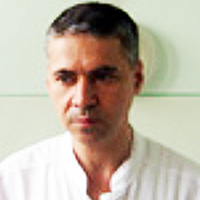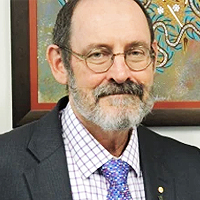Correlation of Inappropriate use of Ceftriaxone and Bacterial Resistance in the Hospital Environment: Integrative Review
Published on: 29th March, 2024
Introduction: Bacterial resistance is a threat to public health, as it is estimated that 37,000 people die due to hospital infections, most of them due to multidrug-resistant bacteria. In part, this resistance is due to the inappropriate use of antibiotics, with ceftriaxone being one of the most used. Therefore, this article aims to analyze the consequences of using ceftriaxone in the hospital environment. Methodology: This is an integrative qualitative review, following the PICO strategy, using the Embase, BVS, and Pubmed databases, with the guiding question being: “In patients admitted to a hospital environment (P), is ceftriaxone used appropriately (I) for the treatment of infections (CO)?” and the time frame from 2013 to 2023. Results: 272 articles were found in total, 46 obtained from the VHL, 62 from PubMed, and 164 from Embase. Of these, 66 were duplicates, leaving 206 works for title and summary reading. After reading, 79 were selected for full reading, with 7 articles ultimately being selected for the study. An average of 62.3% of inappropriate use was found, with the minimum value found being 19% and the maximum being 87.9%. The main reasons for this use were: indication, dose, frequency, and duration. Conclusion: From reading the articles, it is concluded that the inappropriate use of ceftriaxone is mainly due to: indication, dose, frequency, and duration of treatment. These elements must be monitored, as their inappropriate use increases the length of hospital stay and may be associated with the emergence of bacterial resistance.
Case Report: Carotidynia Correlated to Cancer Treatment?
Published on: 10th October, 2023
Carotidynia refers to an idiopathic, self-limiting, benign condition of head and neck pain emanating from a tender carotid artery. We report a case where a patient presenting with carotidynia combined with fever elevated white blood count and C-reactive protein (CRP), nine days after treatment with chemotherapy (paclitaxel-carboplatin) and granulocyte-colony stimulating factor (G-CSF). The condition resolved after treatment with glucocorticoids in combination with antibiotics. The radiological findings were congruent with caritodynia and the conclusion from the case was that the anti-cancer treatment was causative, supported by the literature reviewed, although paclitaxel has previously not been implicated.
Case Report: An Elusive Case of Septic Arthritis
Published on: 2nd May, 2024
Septic arthritis is a serious inflammatory infectious state of the joint secondary to microbial infection. In the pediatric population the most common route of infection is haematogenous spread. Less than fifty percent of patients with septic arthritis will yield positive culture results with a mortality rate of up to 42% in some cases. Due to the challenge in obtaining culture and identification of the causative organism the management of septic arthritis has been more of empirical in nature with the chosen antibiotic synchronized with the epidemiological data. Here is a case of a 14 months old female patient presenting at our hospital with a left knee and lower thigh swelling for three days with failure to bare weight on the limb. In addition, she had fever and diarrhea for three days. Upon evaluation clinical, laboratory and radiological findings supported septic arthritis expect for her blood, pus and synovial fluid culture of which all came back negative. She had poor response to intravenous ceftriaxone, gentamycin, metronidazole, ampicillin- cloxacillin and amoxicillin clavunate. Over the course of therapy, she developed septic shock, severe anemia and acute liver failure and was admitted to the intensive care unit. Afterwards she was initiated vancomycin and developed a hypersensitivity reaction with generalized edema which prompted cessation of the drug. Due to her critical state and poor response a triple therapy regimen composing of meropenem, ciprofloxacin and metronidazole was selected and maintained for three weeks followed by an oral clindamycin course for another three weeks of which she responded. In addition, surgical debridement arthrotomy, irrigation and drainage were done. Physiotherapy for rehabilitation is ongoing with patient recovering well.
Antibacterial Resistance and Extended-Spectrum Beta-Lactamase (ESBL) Phenotypes in Enterobacteriaceae Isolated from Fecal Samples of Humans and Animals in Selected Local Government Areas of Nasarawa State, Nigeria
Published on: 13th August, 2024
It is quite alarming the increasing rate of antibacterial resistance all over the world considering the public health threat and the re-emergence of multi-drug resistant Enterobacteriaceae. The aim of this study is Antibacterial resistance and phenotypic detection of Extended Spectrum Beta-Lactamase (ESBL) producing Enterobacteriaceae isolated from human and animal fecal samples in selected local government areas of Nasarawa state, Nigeria was carried out in the study. Hundred (100) samples comprising human and animal (goats, cattle, and chicken) were collected and 55 samples were multidrug resistant. A commercial biochemical kit (Eneterosystem 18R) was used for the isolation and identification of Enterobacteriaceae. Kirby Bauer Disk Diffusion Method was used for antibacterial susceptibility testing of Enterobacteriaceae isolates. The Double Disc Synergy Test (DDST) method was also used for the phenotypic confirmation test of Extended Spectrum Beta Lactamase (ESBL). The occurrence of multidrug-resistant isolates shows that Escherichia coli (100.00%) which is the highest, Proteus mirabilis (14.54%), Klebsiella pneumoniae, and Salmonella enterica (10.90%), while the occurrence of Shigella flexneri (9.09%) was the lowest. The Enterobacteriaceae isolates were more resistant to Cefuroxime, Cefexime, Amoxicillin Clavulanate, and Imipenem/Cilastatin with percentage resistance ranges from 66.6% - 100%. The occurrence of ESBL producers shows that Escherichia coli (60.00%) and Proteus mirabilis (62.5%) were high while Shigella flexneri (20.0%) had a low occurrence of ESBL. The sale and in-discriminate use of antibiotics without a prescription is an important regulatory issue in the abuse of antibiotics for both humans and animals. The Beta-Lactam and gentamycin antibiotics were not effective against the Multi-Drug Resistant (MDR) isolates and most of the isolates were ESBL producers.
Resolution of Chronic Bacterial Prostatitis with Bacteriophage-antibiotic Therapy
Published on: 22nd August, 2024
Chronic bacterial prostatitis is a commonly diagnosed genitourinary infection that presents significant challenges both in diagnosis and treatment. In an upcoming era of antibiotic resistance, and limited therapeutic options it becomes imperative to revise current guidelines and to provide more effective treatment strategies. At the Eliava Phage Therapy Center (Tbilisi, Georgia) we utilize bacteriophage therapy as an alternative approach against chronic bacterial infections. Bacteriophages, viruses that target and lyse specific bacterial cells, can be used as a stand-alone treatment or in conjunction with antibiotics. We present a case report of a patient with prostatitis caused by Escherichia coli infection, who prior to addressing our clinic, has been receiving antibiotic therapy without any positive effect. Our approach of combined use of antibiotics and phages was successful not only in complete clinical improvement but also in total bacterial eradication. This outcome shows the potential of bacteriophage therapy as a valuable adjunct to conventional antibacterials in the management of prostatitis.
Antimicrobial, Antioxidant Activity of Ethyl Acetate Extract of Streptomyces sp. PERM2, its Potential Modes of Action and Bioactive Compounds
Published on: 18th November, 2024
Background: Microorganisms belonging to Streptomyces sp. are Gram-positive bacteria known for their unsurpassed capacity for the production of secondary metabolites with diverse biological activities. The aim of this study was to evaluate the antimicrobial and antioxidant properties of ethyl acetate Streptomyces sp. PERM2 extract, its potential modes of action and bioactive secondary metabolites.Results: The ethyl acetate PERM2 extract showed antimicrobial activity more pronounced on both Gram-positive and Gram-negative bacteria and fungi with a Minimum Inhibitory Concentration value (MIC) of 0.5 mg/mL and Minimum Bactericidal Concentration (MBC) of 2 - 4 mg/mL against bacterial pathogens. MIC value against pathogenic fungi was 2 mg/mL and Minimum Fungicidal Concentration (MFC) of 0.01 - 0.05 mg/mL against pathogenic fungi. PERM2 crude extract showed the ability to inhibit bacteria cell wall synthesis at 0.5 and 1 MIC. The extract was found to possess dose-dependent 2,2-Diphenyl-picrylhadrazyl (DPPH) free radical scavenging and Ferric reducing activity. The gas chromatography-mass spectrometry (GC-MS) analysis revealed the presence of three major compounds identified as 9,12-octadecadienoic acid (Z, Z) (29.75%), tridecyl trifluoroacetate (24.82%) and 1-(+)-ascorbic acid 2, 6-dihexadecanoate (22.34%). The liquid chromatography-tandem mass spectrometry (LC-MS/MS) analysis revealed the presence of 22 non-volatile metabolites in PERM2 extract and only the compound 3, 30-O-dimethylellagic acid was identified. Conclusion: The results of this study indicate that ethyl acetate Streptomyces sp. PERM2 extract possesses antibacterial, antifungal, and antioxidant activities; inhibits bacteria cell wall and protein synthesis; and contains significant bioactive secondary metabolites which could be used as an alternative to multi-resistance antibiotics.
Amine Functionalized Graphene Quantum Dots as a Smart Nano Antibacterial Agent
Published on: 13th December, 2024
Conventional antibiotics are resisted by bacteria at an increasing rate, prompting studies into the development of alternate antibiotic agents. This work demonstrates the fabrication and characterization of amine functionalized graphene quantum dots (af-GQDs) with starting materials of graphene oxide, ammonia, and hydrogen peroxide by chemical oxidation and hydrothermal methods. The synthesized af-GQDs were characterized using analytical techniques such as UV-vis, fluorescence, FTIR, Raman spectroscopy, and morphological studies through TEM. TEM images showed that af-GQDs have smooth surface morphology with porous in nature and are spherical in shape with particle size less than 20 nm. The prepared af-GQDs show a quantum yield of 26.32%. A growth inhibition test was performed on E. coli and S. aureus for the prepared af-GQDs at different increasing concentrations. The minimum inhibitory concentration for the prepared af-GQDs on E. coli was found to be 55 μg/mL and for S. aureus was found to be 35 μg/mL. Percentage cell viability studies were performed on HeLa and Jukart cells for 24 hours at different concentrations. Both cells showed maximum cell viability percentage at the initial concentration. At higher concentrations, the cell viability is decreased for both cells but the Jukart cells show a minimum percentage of cell viability at higher concentrations than the HeLa cells.
Unveiling the Impostor: Pulmonary Embolism Presenting as Pneumonia: A Case Report and Literature Review
Published on: 5th February, 2025
Pulmonary Embolism (PE) can present with symptoms resembling pneumonia, creating a diagnostic challenge, particularly in patients with comorbidities. We report the case of a 67-year-old male who presented with cough, hemoptysis, shortness of breath, fever, and pedal edema. Initially diagnosed with consolidation based on chest X-ray findings, he was treated with antibiotics. However, persistent symptoms prompted further evaluation, leading to the diagnosis of PE with pulmonary infarction and deep vein thrombosis on computed tomography pulmonary angiography and Doppler ultrasound. This case highlights the need to consider PE in the differential diagnosis of consolidation, particularly in high-risk individuals, to avoid delays in appropriate management.
















